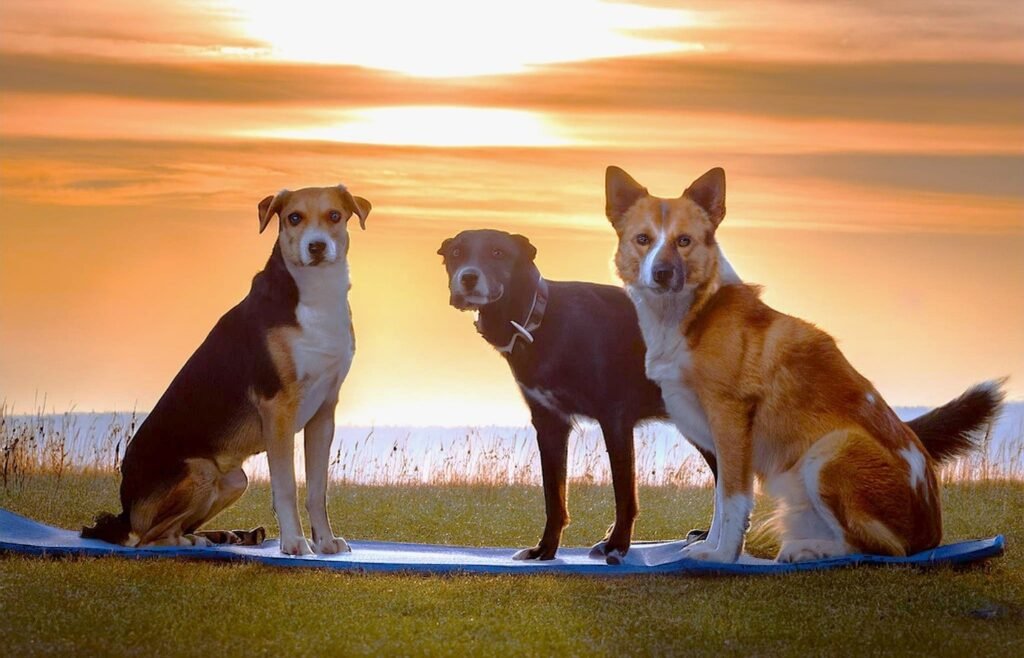Overheating In Dogs: Signs And How to Avoid Your Dog Overheating
Our canine companions’ well-being becomes a top priority as the temperature rises. Dogs, like people, can experience overheating, which can have significant health repercussions. In this blog, you will learn about the signs of overheating in dogs and how to prevent and treat it, which is critical for your dog’s health and safety.
So, let’s get started!
What is Dog Overheating?
Overheating in dogs happens when their body temperature increases over the normal range owing to environmental factors, exercise, or health problems. Unlike humans, dogs do not sweat to control body temperature; instead, they use panting, increased heart rate, and other methods.
This makes them more likely to become overheated and have problems because of the heat, especially when it’s hot or they’re doing strenuous activities.
Signs of Dog Overheating
Looking for the signs of dog overheating is essential for timely action. Here are some dog overheating symptoms to look for:
a. Early signs
- Excessive panting
- Drooling
- Pale gums
- Increased heart rate
b. Advanced Signs
- Vomiting
- Diarrhea
- Disorientation
- Seizures
- Collapse
c. How To Tell If Your Dog Is Overheated If you detect any of the warning signs of dog overheating listed above, take urgent action. A dog’s average body temperature ranges from 101°F to 102.5°F. Anything above 104°F is indicative of dog overheating and can result in heatstroke.
Dog Overheating At Night
a. What Causes Overheating at Night
Dogs can overheat at night due to inadequate ventilation, high room temperatures, or excessive bedding. Even a cool environment might turn deadly if the airflow is blocked.
b. Tips to Prevent Dog Overheating at Night-time
Make sure your dog’s sleeping area is well-ventilated to prevent overheating at night. Replace heavy bedding with cooling pads or light blankets, and always keep water on hand.
Dog Overheating Treatment
a. Immediate Actions to Take
- Transfer your overheated dog to a cooler spot quickly.
- Offer cool (but not cold) water to drink.
- Wet their body with lukewarm water, focusing on the tummy and paws.
- Use fans to assist in lowering the body temperature of overheated dogs.
b. Veterinary Treatment in Severe Cases
If your dog exhibits signs of severe overheating, like collapsing or seizures, contact the veterinarian for help immediately. Heatstroke may result in internal organ damage in overheated dogs; therefore, immediate medical treatment must be taken.
c. Long-term Overheated Dog Recovery
Overheated dog recovery may take time, significantly if organs are damaged. Follow your veterinarian’s instructions regarding rest and fluids, and watch for any remaining dog overheating symptoms.
Risk Of Overheating In Dogs
a. Warning Signs of dog overheating that Leads to death
Overheating in dogs can cause heatstroke, which, if left untreated, can be fatal. Severe lethargy, confusion, convulsions, and collapse are all potential warning signals. Immediate action is necessary to avoid death.
b. How to avoid dog overheating deaths?
Prevention is the most effective technique for preventing dogs from overheating quickly. Avoid extreme temperatures, stay hydrated, and calm your dog during outdoor activities. It would be best never to leave your pet in a parked car, even briefly.
Dog Breeds in the USA That Often Overheat
a. Most Vulnerable Breeds
Certain breeds are more at risk for overheating because of their physical traits. Such as:
- Bulldogs
- Pugs
- Boxers
- Shih Tzus
- French Bulldogs
These brachycephalic breeds have short snouts, making it difficult for them to pant properly. Therefore, these dog breeds overheat easily.
b. Special Care for High-Risk Breeds
It is recommended that owners of high-risk breeds take additional precautions, such as ensuring their dog has access to calm, shaded areas always and refraining from engaging in intense exercise in the heat.
Preventing Overheating in Dogs
a. How to Keep Your Dog Cool During Hot Weather
- Provide an abundance of fresh water and shade.
- Do not take your dog for a walk during the hottest hours of the day.
- Opt for vests or cooling mats.
b. Proper Hydration
Ensure your dog always has access to water, especially when outside. Dehydration can worsen the effects of heat, resulting in dog overheating.
c. Exercise considerations
Exercise should be restricted during the hottest hours of the day to prevent overheating in dogs. When the weather is colder, go for an early morning or late evening walk.
d. Dog Cooling Products
Invest in products that lower your dog’s body temperature, such as cooling collars, vests, and mats. These products are convenient for outdoor activities or long car drives to prevent overheating in a dog.
Final Thoughts
Overheating is a significant issue for dog owners, particularly in hot weather. Knowing the signs of overheating, taking preventative steps, and knowing how to respond will help keep your dog safe and healthy. By staying attentive and responsible, you can prevent your dog from heatstroke and keep him comfortable all year.
Frequently Asked Questions
Q: How to know if a dog is overheating?
A: Look for signs such as increased panting, drooling, pale gums, a fast heartbeat, or exhaustion.
Q: What to do if your dog is overheating?
A: Shift your dog to a cool location, provide water, and apply cool (not extremely cold) water to their body. If symptoms persist, see a veterinarian.
Q: How to stop overheating in dogs?
A: Avoid intense exercise in hot weather, provide access to shelter and water, and refrain from leaving your dog in a hot car.
Resources:
Fogle, B. (2009). Dog Care (5th ed.). Howell Book House.
Smith, M. L., & Brown, T. (2018). Veterinary Guide to the Treatment of Heat Stroke in Dogs. J. Vet. Emerg. Crit. Care, 28(4), 341-352.
Sutherland, M., & McLaren, D. (2020). Canine Heatstroke: A Comprehensive Review. Veterinary Medicine and Science, 6(1), 23-30.


Pingback: Dog allergies: Does your dog have allergies? - PetsCarePedia